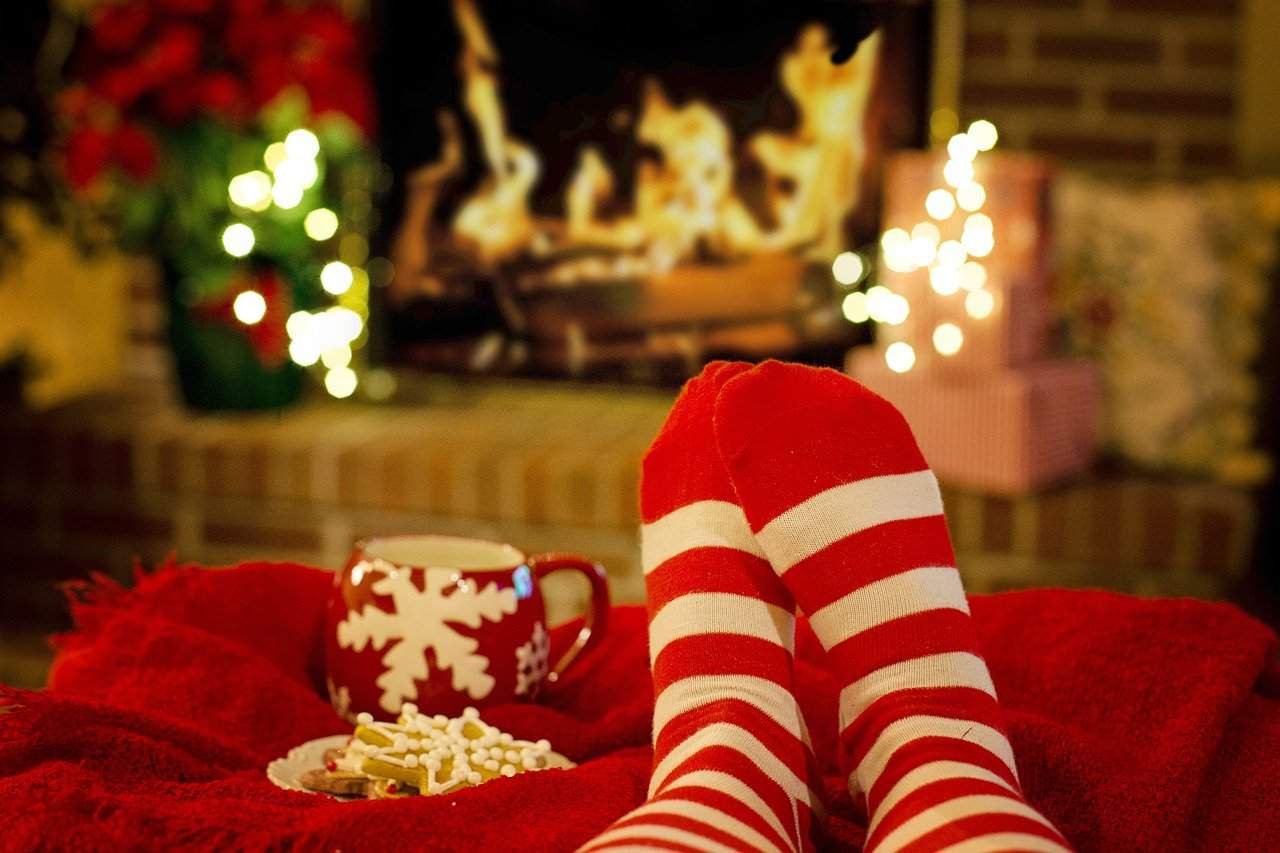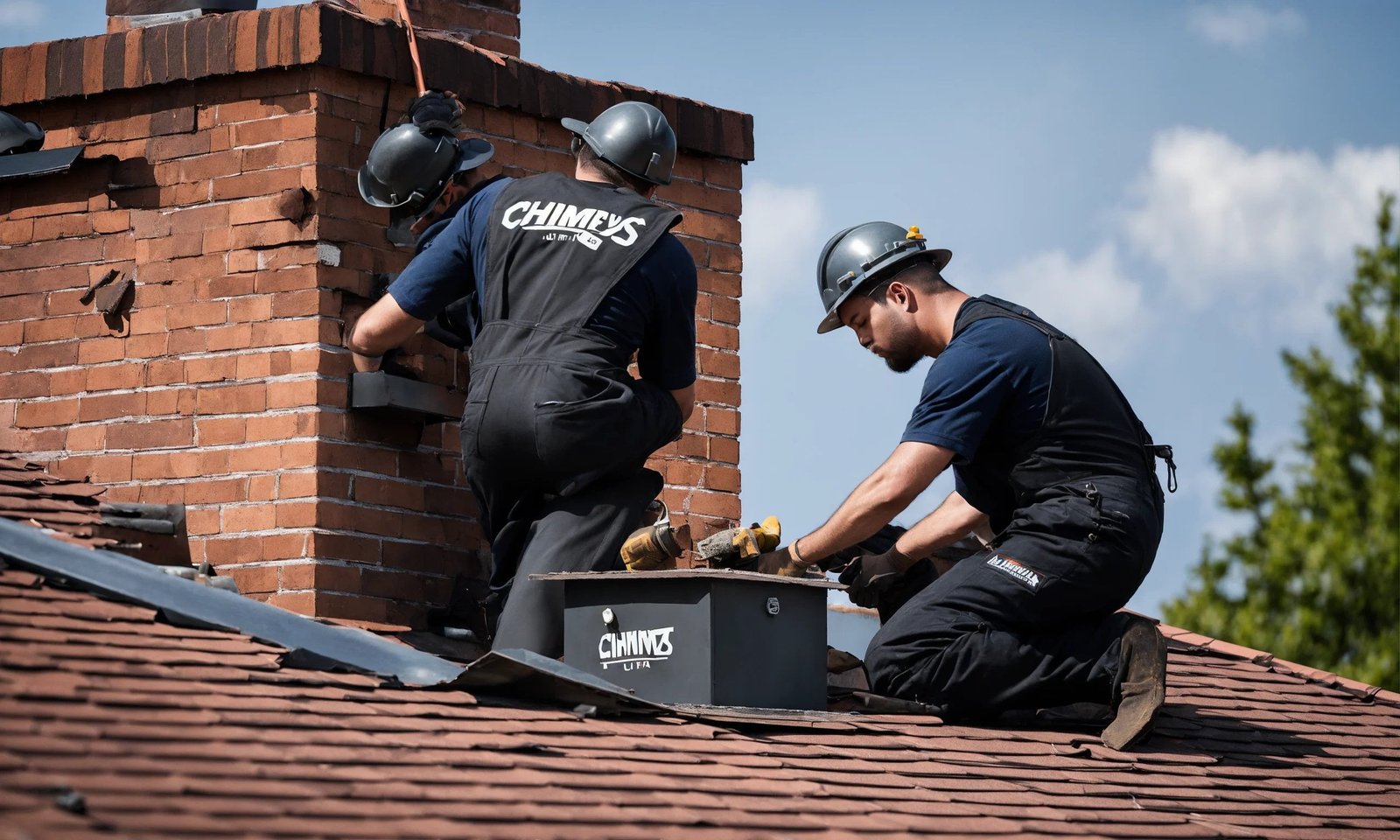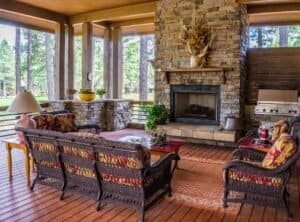A fireplace should be an important part of your home during the winter months, but chimney maintenance is often neglected. A well-functioning chimney not only keeps your home warm but can also protect you from dangerous carbon monoxide poisoning. Therefore, hiring a professional chimney service is important for your family’s safety. But, before you hire a chimney sweep, you should learn about the chimney services that they provide. In this post, we have compiled a list of 30 important questions and answers about chimney services so that you can make an informed decision.

Chimney Inspection and Cleaning:
Q: How often should I have my chimney inspected?
A: It’s highly advisable to have a professional chimney inspection annually. This preventive measure ensures early detection of potential issues such as creosote buildup, cracks, or blockages, ultimately contributing to the safety and efficiency of your chimney.
Q: What does a chimney inspection involve?
A: A comprehensive chimney inspection involves a thorough examination of the entire chimney structure, including the flue, liners, crown, and exterior. Chimney professionals assess the condition of the chimney, looking for any signs of damage, wear, or potential safety hazards.
Q: Why is chimney cleaning important?
A: Chimney cleaning is crucial because it removes creosote, a byproduct of burning wood that can accumulate and become a fire hazard. Regular cleaning also addresses other debris and ensures that your chimney functions efficiently, minimizing the risk of chimney fires and maintaining optimal airflow.
Chimney Repairs:
Q: How do I know if my chimney needs repairs?
A: Signs of chimney damage include cracks in the masonry, crumbling mortar, water leaks, and a damaged chimney crown. If you notice any of these issues or suspect a problem, it’s essential to schedule a professional inspection to determine the extent of the damage and necessary repairs.
Q: Can I repair a cracked chimney crown myself?
A: Repairing a cracked chimney crown requires specific materials and expertise. While small cracks may be temporarily sealed with appropriate sealants, it’s recommended to consult with a professional chimney technician for a thorough assessment and proper repairs, especially for larger issues.
Q: What is tuckpointing, and when is it needed?
A: Tuckpointing is the process of repairing or replacing deteriorated mortar joints in the chimney. It becomes necessary when the mortar starts to erode, exposing the bricks to potential damage. Tuckpointing helps maintain the structural integrity of the chimney and prevents water infiltration.
Chimney Sweeping:
Q: How often should I have my chimney swept?
A: The frequency of chimney sweeping depends on how often you use your fireplace or wood-burning stove. For regular use, an annual chimney sweep is generally recommended. However, if you use your chimney more frequently, especially during the winter months, more frequent sweeps may be necessary.
Q: Can I sweep my chimney myself?
A: While some homeowners attempt DIY chimney sweeping, it’s a task that’s best left to professionals. Chimney sweeps not only have the necessary tools and equipment but also the expertise to identify and address potential issues during the cleaning process.
Q: Is sweeping necessary for gas fireplaces?
A: Yes, even gas fireplaces require regular inspections and sweeps. Although gas burns cleaner than wood, debris and other substances can accumulate over time, affecting the efficiency and safety of the fireplace. Regular sweeps help ensure proper ventilation and functionality.
Chimney Caps and Dampers:
Q: What does a chimney cap do?
A: A chimney cap serves multiple purposes. It acts as a barrier against water, preventing it from entering the chimney and causing damage. Additionally, chimney caps keep out animals, debris, and leaves. They also help improve draft by preventing downdrafts.
Q: How often should I replace my chimney cap?
A: The lifespan of a chimney cap can vary based on factors such as weather conditions and material quality. As a general guideline, consider replacing your chimney cap if it shows signs of damage, rust, or if it no longer effectively serves its protective functions. Regular inspections can help determine when a replacement is necessary.
Q: Do I need a chimney damper for a gas fireplace?
A: While many gas fireplaces come with built-in dampers, it’s essential to check your specific fireplace model. If your gas fireplace does not have a damper or if it is malfunctioning, consult with a professional to assess the situation. Dampers play a crucial role in controlling draft and preventing heat loss when the fireplace is not in use.
Fireplace Efficiency:
Q: How can I make my fireplace more energy-efficient?
A: Improving the energy efficiency of your fireplace involves various measures. Using seasoned wood that burns more efficiently, ensuring proper insulation around the fireplace, and adding a fireplace insert are effective ways to enhance efficiency and reduce heat loss.
Q: What is a fireplace insert, and how does it improve efficiency?
A: A fireplace insert is a sealed combustion chamber that is inserted into an existing fireplace. It improves efficiency by directing more heat into the room rather than allowing it to escape through the chimney. Fireplace inserts are an excellent solution for maximizing heat output and reducing energy consumption.
Q: Can a chimney be too tall for efficient draft?
A: Yes, an excessively tall chimney can lead to drafting issues. If the chimney is too tall, it may create too much draft, resulting in difficulties in controlling the airflow and affecting the overall efficiency of the fireplace or stove. It’s advisable to consult with a professional to assess and, if necessary, adjust the height for optimal performance.
Safety Measures:
Q: How can I prevent chimney fires?
A: Preventing chimney fires involves a combination of responsible burning practices and regular maintenance. Avoid burning unseasoned wood, clean the chimney regularly to remove creosote buildup, and ensure proper ventilation. Additionally, consider installing a spark arrestor to prevent sparks from escaping.
Q: Is it safe to use a chimney with visible cracks?
A: Visible cracks in the chimney can compromise its structural integrity and pose safety risks. It’s not advisable to use a chimney with visible cracks until they have been thoroughly inspected by a professional. Cracks may indicate underlying issues that require prompt attention and repair to ensure safe operation.
Q: Are chimney liners necessary?
A: Chimney liners are essential for safety and performance. They protect the chimney structure from heat transfer to combustibles, improve draft, and enhance overall efficiency. While some older chimneys may not have liners, installing a proper liner is often recommended for both new and existing chimney systems.
Troubleshooting:
Q: Why is my fireplace smoking into the room?
A: Several factors can cause a fireplace to smoke into the room, including drafting issues, blockages, or improper wood burning. Troubleshooting may involve checking for obstructions, adjusting the damper, or consulting with a professional to identify and address the root cause.
Q: How can I identify water leaks in my chimney?
A: Water leaks in the chimney may manifest as stains on the ceiling or walls, musty odors, or visible damage. To identify leaks, conduct a visual inspection for any signs of water entry, and if necessary, consult with a professional who can perform a thorough assessment and recommend appropriate solutions.
Q: What causes chimney odors, and how can they be eliminated?
A: Chimney odors are often caused by creosote buildup, debris, or water. Regular chimney cleaning and addressing the root cause of the odor, such as fixing leaks or removing blockages, are effective ways to eliminate unpleasant smells and maintain a fresh indoor environment.
Installation and Upgrades:
Q: Can I install a chimney cap myself?
A: While it’s technically possible to install a chimney cap as a DIY project, professional installation is recommended. Chimney caps need to be properly sized, securely attached, and aligned to ensure optimal performance. Professional installation helps prevent issues such as improper fit or inadequate sealing.
Q: How can I upgrade my fireplace for better efficiency?
A: Upgrading your fireplace for better efficiency involves various options. Consider adding a fireplace insert, which creates a sealed combustion chamber for improved heat retention. Additionally, using energy-efficient glass doors and ensuring proper insulation around the fireplace can further enhance its performance.
Q: What is a chimney chase cover, and when is it needed?
A: A chimney chase cover is a protective metal covering that sits on top of a chimney chase (the structure enclosing a factory-built chimney). It helps prevent water entry and animal intrusion. Chimney chase covers are necessary components for maintaining the integrity of the chimney system and preventing potential damage.
Maintenance:
Q: How do I maintain my chimney during the off-season?
A: Off-season chimney maintenance involves several steps. Seal the chimney cap to prevent water entry, conduct a visual inspection for any visible damage, and address any needed repairs or cleaning before the heating season begins. Taking these proactive measures helps ensure the chimney is ready for safe and efficient use.
Q: Can I use any wood in my fireplace?
A: To maintain a cleaner burn and reduce creosote buildup, it’s recommended to use seasoned hardwoods in your fireplace. Seasoned wood has lower moisture content, allowing for more efficient combustion and minimizing the production of creosote, a substance that can lead to chimney fires.
Q: How do I prevent animals from nesting in my chimney?
A: Preventing animals from nesting in your chimney involves installing a chimney cap with a mesh screen. The screen acts as a barrier, preventing animals from entering while allowing for proper ventilation. Regular inspections can ensure that the cap remains intact and effective in keeping wildlife out.
Cost and Budgeting:
Q: How much does a chimney inspection and cleaning typically cost?
A: The cost of a chimney inspection and cleaning can vary based on factors such as geographic location, the complexity of the chimney system, and any additional services needed. On average, homeowners can expect a range of $150-$300 for chimney sweep and inspection, and it’s advisable to obtain quotes from reputable chimney professionals in their area.
Q: Are chimney repairs covered by homeowners’ insurance?
A: Whether chimney repairs are covered by homeowners’ insurance depends on the cause of the damage. Damage resulting from a covered peril, such as a sudden event like a storm, may be eligible for coverage. However, gradual wear and tear or lack of maintenance are typically not covered. It’s essential to consult with your insurance provider for specific coverage details.
Q: What is the average lifespan of a chimney cap?
A: The lifespan of a chimney cap can vary based on factors such as weather conditions, material quality, and overall maintenance. On average, a well-maintained chimney cap can last between 10 to 20 years. Regular inspections help determine when a replacement is necessary, ensuring continued protection for your chimney system.



